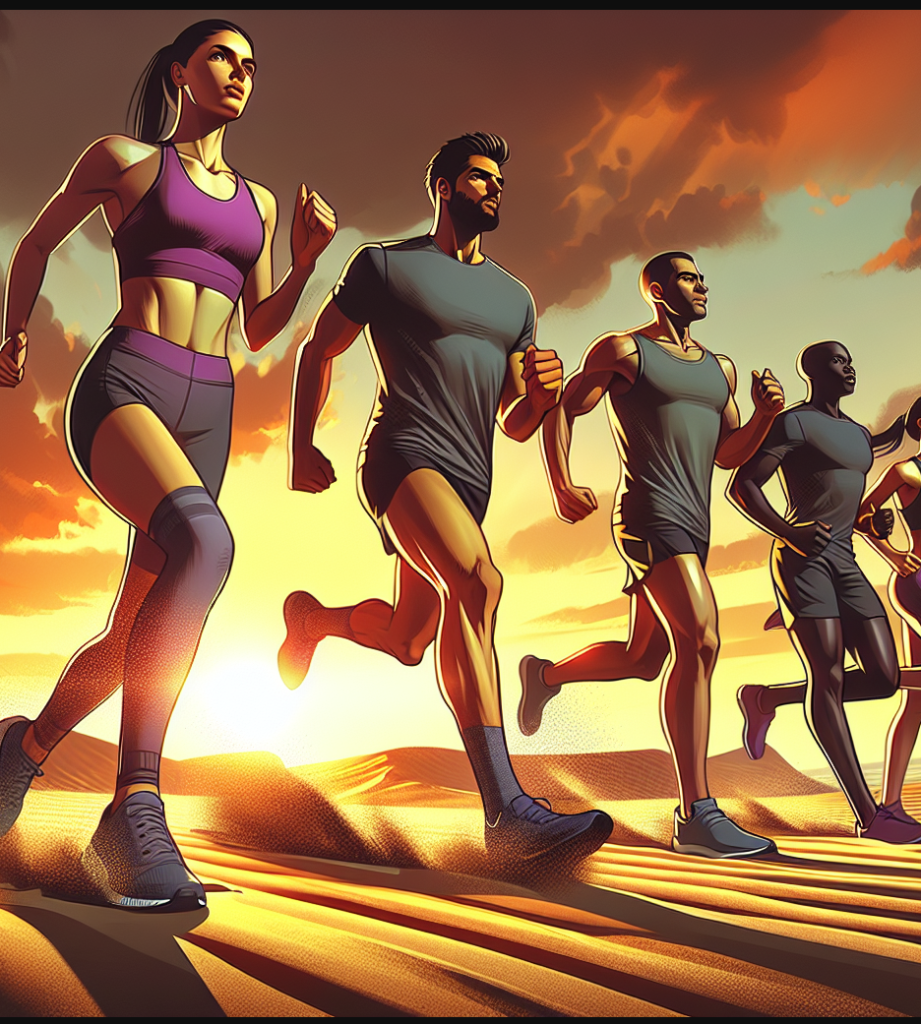Olympikus Grafeno 2 Review: The Running Shoe for Performance
Hey there, fellow runners! Have you ever wondered what it feels like to run on clouds? Well, you might just find out with the new Olympikus Grafeno 2. This Brazilian brand has outdone itself, using top-notch materials to create a running shoe that promises both comfort and performance. Have you been searching for that perfect pair to boost your training sessions or perhaps to conquer your next marathon? The Grafeno 2 might just be your new best friend.

In this review, we’ll dive deep into what makes these shoes stand out. From the innovative graphene-infused sole to the high-quality construction, Olympikus has designed these shoes with serious runners in mind. Whether you’re a seasoned marathoner or just starting your running journey, you’ll find something to love here. So, lace up and let’s get into it!
Introduction to Olympikus Grafeno 2
Hey there, running enthusiasts! If you’re on the hunt for the ultimate running shoe that combines performance, comfort, and durability, then let me introduce you to the Olympikus Grafeno 2. This shoe has been a game-changer for me, and I’m excited to share why it might just be the perfect fit for you too.
First off, let’s talk about the design and build quality. The Grafeno 2 is crafted with meticulous attention to detail, featuring a sleek and modern look that’s sure to turn heads on your next run. It’s not just about aesthetics, though. The shoe is designed with advanced materials that provide superior support and flexibility, making each stride feel effortless. The upper mesh is breathable, keeping your feet cool and dry, while the reinforced heel and toe areas add an extra layer of durability.

When it comes to performance and comfort, the Grafeno 2 truly shines. The midsole is equipped with cutting-edge cushioning technology that absorbs impact and provides a responsive feel, allowing you to maintain your pace without feeling fatigued. I’ve taken these shoes on both short sprints and long-distance runs, and they’ve consistently delivered top-notch performance. The padded collar and tongue add to the overall comfort, ensuring that you can focus on your run without any distractions.
Durability is another key factor, especially if you’re logging serious miles. The Grafeno 2’s outsole is made from a high-abrasion rubber that stands up to the wear and tear of daily running. I’ve put these shoes through their paces on a variety of terrains, from asphalt to trails, and they’ve held up remarkably well. Plus, the traction is fantastic, giving you confidence with each step.
So, should you give the Olympikus Grafeno 2 a try? Absolutely! Whether you’re a seasoned runner or just starting out, these shoes offer a perfect blend of style, comfort, and durability. Trust me, once you slip them on, you’ll wonder how you ever ran without them. Happy running!
Innovative Graphene-Infused Sole
One of the standout features of the Olympikus Grafeno 2 is its innovative graphene-infused sole. Graphene, a material that’s been making waves in the tech world, has found its way into the running shoe industry, and for good reason. This wonder material is 200 times stronger than steel and incredibly lightweight, making it the perfect addition to a high-performance running shoe. The graphene-infused sole of the Grafeno 2 provides unparalleled durability and flexibility, ensuring that your shoes can handle the rigors of intense training sessions and long-distance runs without breaking down.
But what does this mean for you, the runner? Imagine having a sole that not only cushions your every step but also propels you forward with each stride. The graphene infusion ensures that the sole remains responsive and resilient, offering excellent energy return that can make all the difference during those last few miles of a marathon. Plus, the enhanced grip provided by the graphene-infused sole means you can tackle various terrains with confidence, whether you’re running on wet city streets or rocky trails. It’s like having a secret weapon under your feet, ready to give you that extra boost whenever you need it.
Incorporating graphene into the sole isn’t just a gimmick; it’s a game-changer. For serious runners who demand the best in performance and durability, the Olympikus Grafeno 2’s innovative sole technology is a compelling reason to give these shoes a try. If you’re looking to elevate your running experience, these shoes might just be the perfect fit for you.
High-Quality Construction Details
When it comes to running shoes, the construction details can make or break your experience on the road or trail. The Olympikus Grafeno 2 excels in this area, offering high-quality construction that ensures both durability and comfort. One of the standout features is its meticulous stitching and seamless overlays, which not only enhance the shoe’s durability but also provide a sleek, modern look. You’ll appreciate the attention to detail that Olympikus has put into every stitch, making sure these shoes can withstand the rigors of intense training and long-distance running.

But what really sets the Grafeno 2 apart is its advanced materials. The upper is constructed from a breathable, yet sturdy mesh that allows for excellent ventilation, keeping your feet cool and dry even on the longest runs. This is complemented by strategically placed reinforcements that offer additional support without adding unnecessary weight. The midsole features a unique blend of cushioning compounds that provide a responsive yet cushioned ride, ensuring that each step feels just right. With the Olympikus Grafeno 2, you’re not just getting a shoe; you’re investing in a piece of engineering designed to elevate your running experience.
Comfort and Fit for Long Runs
When it comes to long runs, comfort and fit are absolutely crucial. The Olympikus Grafeno 2 doesn’t just promise comfort; it delivers it in spades. From the moment you slip your feet into these shoes, you’ll notice the plush cushioning that hugs your foot snugly yet comfortably. The interior is lined with a soft, breathable fabric that keeps your feet cool and dry, even on those sweltering summer runs. Have you ever had to cut a run short because of blisters or discomfort? With the Grafeno 2, those days are behind you.
The fit of the Grafeno 2 is something to marvel at. Thanks to the adaptive mesh upper, the shoe molds perfectly to the shape of your foot, offering a custom-like fit without any pressure points. This is particularly beneficial for long-distance runners who need a shoe that can adapt to minor swelling and changes in foot shape over the course of a run. Plus, the lacing system is designed to provide a secure yet flexible fit, so you won’t find yourself stopping mid-run to adjust your laces. Here’s a quick rundown of what makes the fit and comfort of these shoes top-notch:
- Adaptive Mesh Upper: Provides a snug, customized fit.
- Plush Cushioning: Ensures maximum comfort for long distances.
- Breathable Fabric: Keeps your feet cool and dry.
- Secure Lacing System: Offers a flexible yet secure fit.
So, whether you’re gearing up for a marathon or just enjoying a leisurely long run, the Olympikus Grafeno 2 is designed to keep you comfortable every step of the way. Give them a try, and you might just find that running on clouds isn’t such a far-fetched idea after all!
Why Serious Runners Love Grafeno 2
Why do serious runners keep raving about the Olympikus Grafeno 2? It’s simple—these shoes are a game-changer. Picture this: you’re out on your morning run, and every step feels like you’re gliding effortlessly over the pavement. That’s thanks to the innovative graphene-infused sole, which provides unparalleled grip and durability. This cutting-edge material not only ensures that your shoes last longer but also offers a level of responsiveness that can make all the difference in your performance. Trust me, once you experience the bounce and stability of the Grafeno 2, you’ll wonder how you ever ran without them.
But it’s not just the sole that makes these shoes a hit among serious runners. The design and build quality are top-notch, crafted with high-quality materials that promise both comfort and longevity. The breathable mesh upper keeps your feet cool and dry, no matter how intense your run gets. Plus, the snug yet flexible fit ensures that your feet are well-supported without feeling restricted. Whether you’re training for a marathon or just enjoying your daily jog, the Grafeno 2 adapts to your needs, providing consistent comfort and support. So, if you’re looking to elevate your running game, these shoes are definitely worth a try.
Olympikus Grafeno 2 Review: The Running Shoe for Performance Read More »











